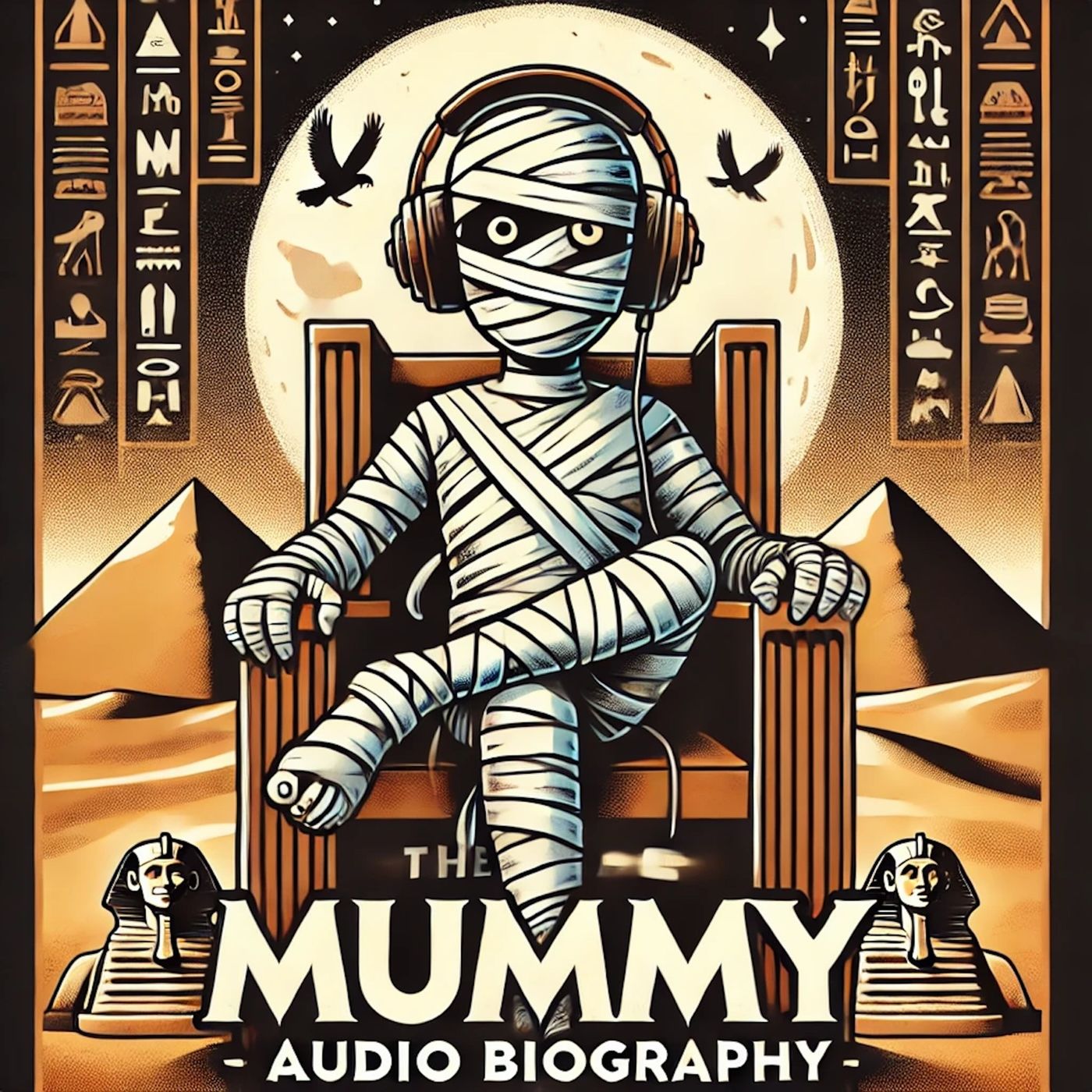The Mummy - Audio Biography
Description
Greetings, tomb raiders and curse enthusiasts! Gather round the sarcophagus as we unravel the bandaged biography of everyone's favorite walking medical supply closet – The Mummy. So grab your khaki shorts, dust off your pith helmet, and for the love of Ra, don't read that ancient scroll out loud. We're about to take a sand-filled journey through the life, death, and afterlife of cinema's most stylish corpse.
Our tale begins in ancient Egypt, a land of pyramids, pharaohs, and really complicated funeral arrangements. Picture this: it's around 3000 BCE, and the Egyptians have just invented the concept of preserving bodies for the afterlife. Talk about a growth industry. Suddenly, "eternal rest" went from a figurative concept to a very literal, very mummified reality.
Now, let's clear up a common misconception right off the bat. Mummification wasn't just for pharaohs and their pampered pets. If you had the cash, you too could be wrapped up tighter than a burrito for your journey to the afterlife. It was like the ancient Egyptian version of cryogenic freezing, but with more bandages and less Walt Disney.
The process of mummification was, to put it mildly, intense. First, they'd remove all the squishy bits (organs, brain, dignity) and store them in fancy jars called canopic jars. The heart, however, was left in place because it was believed to be the center of intelligence and emotion. Then, they'd dry out the body using a salt called natron, stuff it with linen and sawdust (ancient Egyptian Spanx), and wrap it up in more linen than a Bed Bath & Beyond warehouse.
But wait, there's more. They'd then deck out the mummy with amulets, place it in a series of nested coffins, and finally, into a sarcophagus. It was like those Russian nesting dolls, but with more curse potential. The whole process took about 70 days, which is coincidentally how long it feels waiting in line at the DMV.
You might be thinking, "That's all very interesting, but how did we get from respectful burial practices to bandaged monsters chasing Brendan Fraser through the desert?" For that, we need to fast forward a few thousand years to the 19th century, when Europe suddenly developed an unhealthy obsession with all things Egyptian.
It all started with Napoleon's expedition to Egypt in 1798. Alongside his army, Napoleon brought a team of scholars to study Egyptian culture. This led to the discovery of the Rosetta Stone, which allowed for the translation of hieroglyphics. Suddenly, everyone wanted a piece of Egypt.
This period, known as Egyptomania, saw a flood of mummies and artifacts making their way to Europe. Victorian England went nuts for these wrapped wonders. They'd have "unwrapping parties" where a mummy would be unveiled in front of an audience. It was like a macabre version of a gender reveal party, but with more risk of ancient curses.
It was in this climate of fascination with ancient Egypt that our modern conception of the mummy as a horror monster was born. In 1827, Jane Webb published "The Mummy A Tale of the Twenty-Second Century," featuring a reanimated mummy. But the mummy really hit the big time in 1892 with Sir Arthur Conan Doyle's short story "Lot No. 249," which featured a mummy brought back to life through ancient magic.
However, it wasn't until 1932 that the mummy truly shuffled into horror icon status with Universal's film "The Mummy," starring Boris Karloff. Karloff played Imhotep, an ancient Egyptian priest who was mummified alive for trying to resurrect his forbidden love. Millennia later, he's accidentally revived by a bumbling archaeologist. Imhotep then spends the rest of the movie trying to reunite with the reincarnation of his long-lost love, while also killing anyone who gets in his way.
The success of "The Mummy" launched a franchise of films, establishing...
More Episodes
Published 10/22/24


